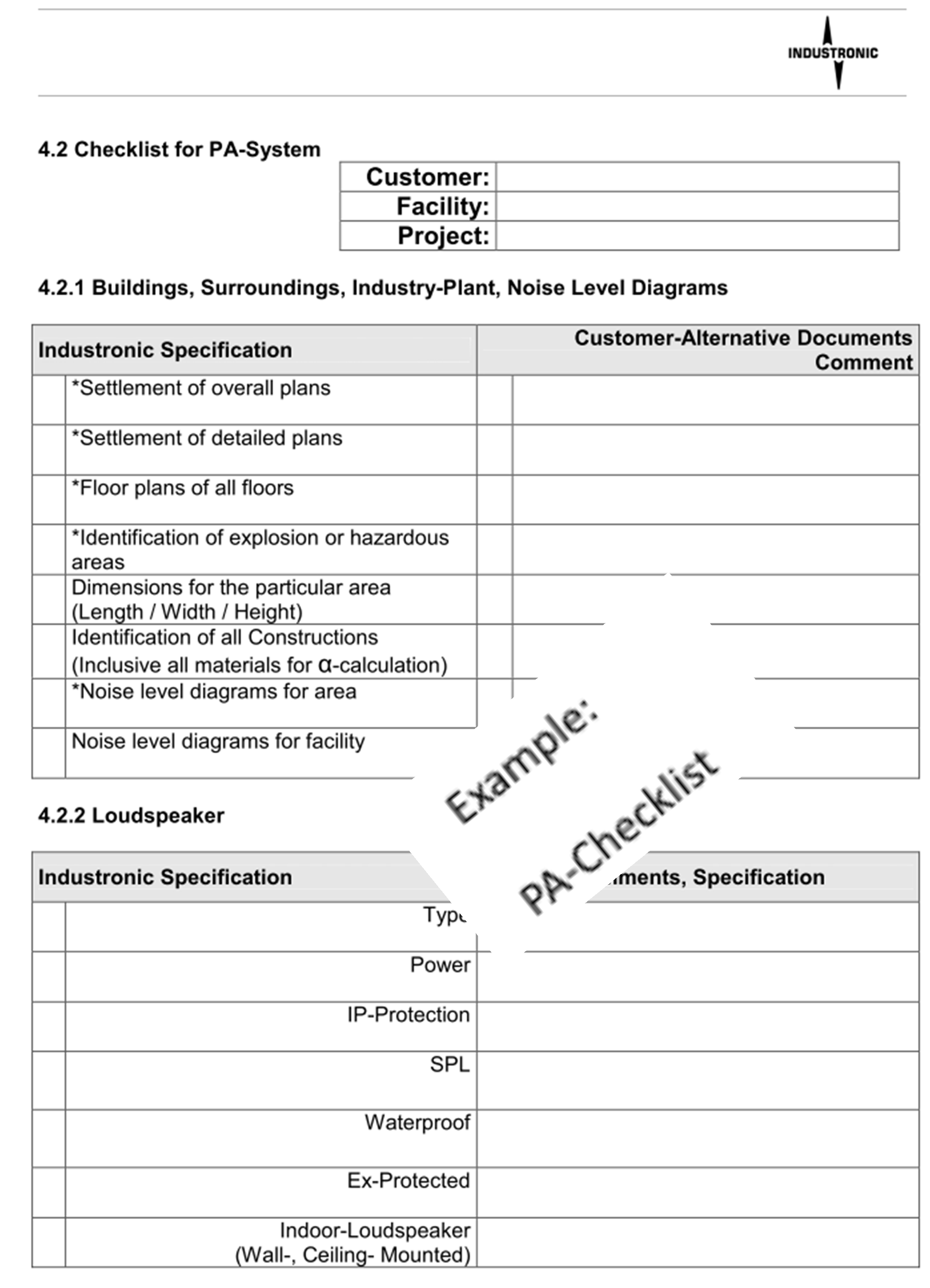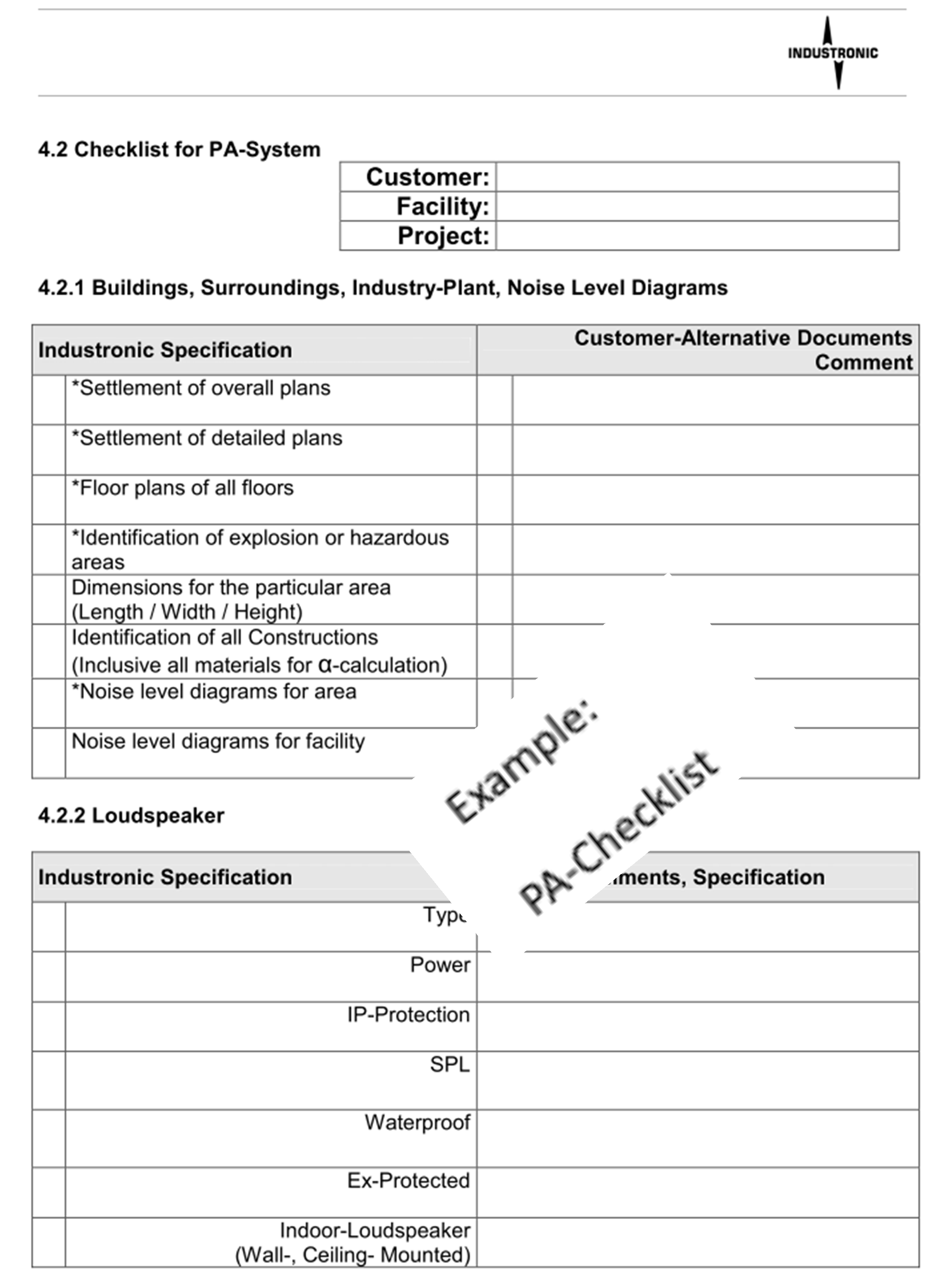When your voice is understood
Part 1 – Evaluation / Budget Planning
Do you remember past times?
In the past, say 30 years ago, a PA system was usually designed by experienced engineers and technicians, with more or less – good results.
There was no possibility to predict the dispersion of a speaker structure in an industrial area with their machines and installations and to calculate the effective signal-to-noise ratio due to poor computing power.
Therefore, some rules of thumb were developed to meet common and simple requirements.
And if there was no rule of thumb for your existing project?
…then the simple ‘The More the Better’ motto was applied…
And now?
We at INDUSTRONIC work in a different manner. The PA design is strictly made and calculated with different software applications and hardware appliances. However for our design work we need more data from our customers than before.
To facilitate your work we prepared some checklists which retrieve the following data:
• Type of speaker/s
• Hazardous areas
• Ambient noise/s
• Plot plans of areas
• Buildings / Side views
• …
When we get this data back, our engineers can then calculate and create a bill of material (BoM) of the equipment required.
Ambient noise?
In some cases, while there is no ambient noise map available, there is a need to measure and map the ambient noise. This can be done by third party companies selected by the customer or by INDUSTRONIC.
For budget planning it should be sufficient to calculate only with a few ‘large surface noise carpets’ to build the noise map and obtain the amount of devices (speakers, flash beacons if noise > 85 dB).
The calculation program works with the simple ‘1/r inverse distance law’. Some parameters like speaker type, general absorption, general ambient noise, signal to noise and power tapping must be inserted additionally.

See the Results!
As a result we get the ‘undisturbed range’ of the speaker with the
parameters entered.
With this range we can calculate the total amount of speakers.
What about indoor areas?
In indoor areas like admin buildings, workplaces and living quarters there should be at least 1 (one) loudspeaker in each room with doors.
On the one hand it is due to regulations or standards, on the other hand it is logical that everybody should be alarmed in case of fire…
That’s all?
Not yet – some documents must be created where all speakers are correctly assigned to the places required.
For more precise sound planning some of our customers need a so-called sound study. But this is another story – learn more in our Part 2 of PA Design / Sound Studies.
0 thoughts to “PA Design – Sound Studies – Part 1”
Nice to learn about the scientific methodology of arriving at the number of speakers in an area needing PA system. I am sure our customers will benefit from this information.